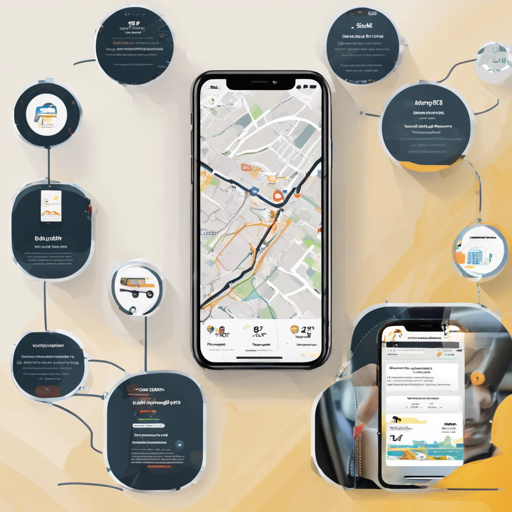As we step into the second decade packed with various ridesharing services, such as on-demand delivery and gig work, creating your own ridesharing application can be both intriguing and rewarding. Leveraging the HyperTrack SDK, we can develop both rider and driver applications that function similarly to popular services like Uber. In this article, we’ll delve into how to bring this project to life and troubleshoot common issues you might face along the way.
What You Need to Begin
- Access to the HyperTrack SDK
- Basic understanding of Android/iOS applications
- Firebase account for backend services
- A text editor or IDE for coding
Step-by-Step Guide
1. Setting Up Your Environment
Before jumping into coding, you need to set up your project environment. Clone the ridesharing repository using the following command:
git clone https://github.com/hypertrack/ridesharing-android.gitAfter you’ve cloned the repository, navigate into the project directory and add your publishable key in the AndroidManifest.xml file.
2. Creating Firebase Project
To facilitate the backend operations of your app, you need a Firebase project. Follow these steps:
- Create a Firebase project.
- Register your Driver and Rider apps with unique bundle IDs.
- Add the Firebase configuration file
google-services.jsonto your project. - Create a Cloud Firestore database in test mode.
3. Understand Architecture & Communication Flow
Think of the ridesharing app architecture as a restaurant where customers (riders) place their orders (ride requests) and the waiters (drivers) deliver food (rides) to them. Here’s a simplified flow of what happens:
- The rider requests a pickup at location X.
- The app backend assigns the ride to the nearest available driver.
- The driver accepts the ride and navigates to pickup the rider.
- Once the rider is picked up, the driver is directed to the drop-off location.
- Finally, the trip is completed, and a summary is generated.
4. Develop the Rider and Driver Apps
Your Rider app allows customers to:
- Select pickup and drop-off locations.
- Book rides and track the driver’s location.
- Share the live trip with family and friends.
The Driver app enables drivers to:
- Find and accept new ride requests.
- Track their navigation to the rider’s pickup location.
- Complete trips and view trip summaries.
Troubleshooting Common Issues
Building an app may not always go smoothly; here are some issues you might encounter:
- App crashes on startup: Ensure that your Firebase configuration file is correctly placed and all necessary permissions have been added.
- Location tracking not working: Check if the GPS permissions are properly set in your manifest file.
- Drivers not receiving ride requests: Ensure you are correctly implementing the Nearby API to fetch available drivers.
For more insights, updates, or to collaborate on AI development projects, stay connected with fxis.ai.
Conclusion
In conclusion, developing a ridesharing app using HyperTrack SDK equips you with valuable skills in app development and real-time data management. This project not only enhances your coding prowess, but also gives you insights into creating efficient user experiences. Don’t forget that at fxis.ai, we believe advancements like these are crucial for the future of AI.
Overall, building a ridesharing application is an intriguing adventure into the world of technology. Embrace the challenges, and happy coding!

